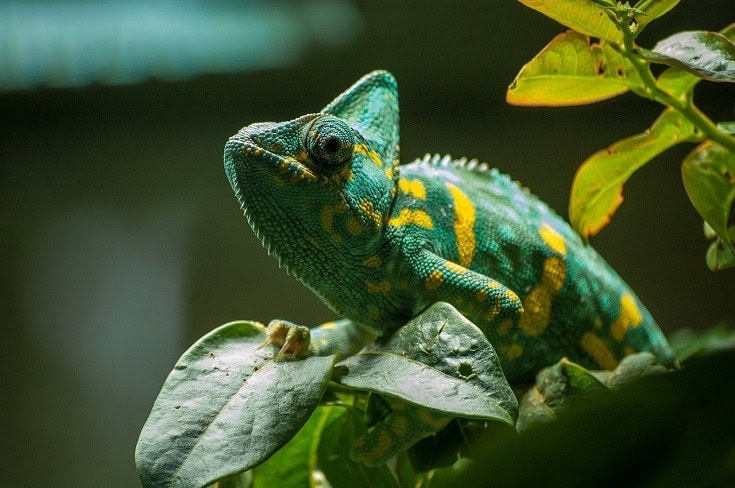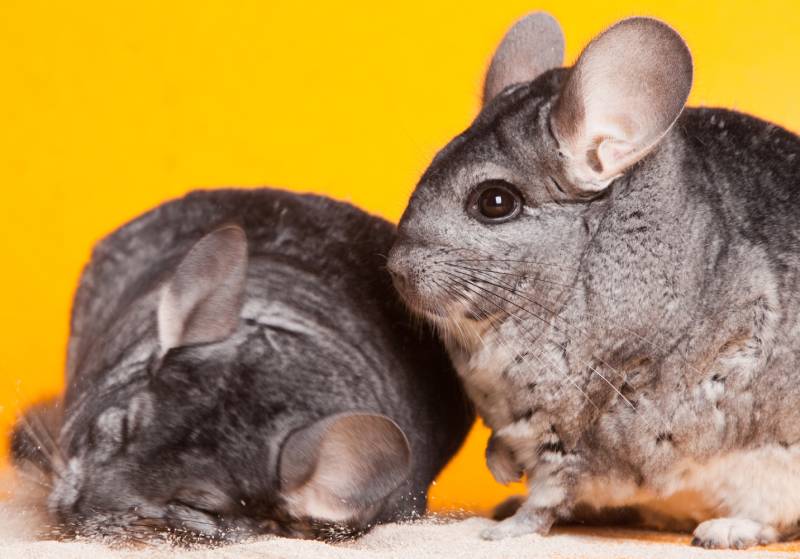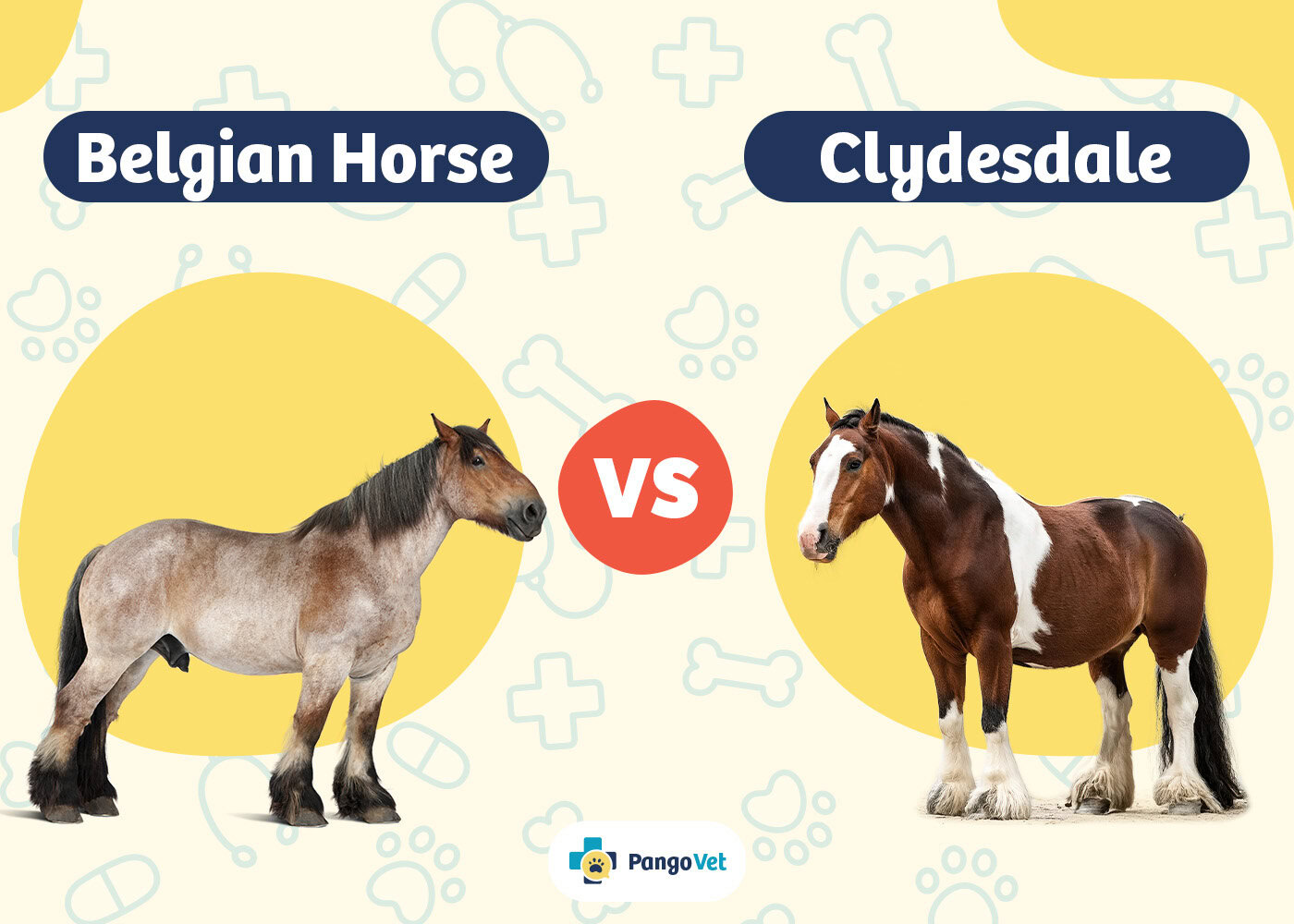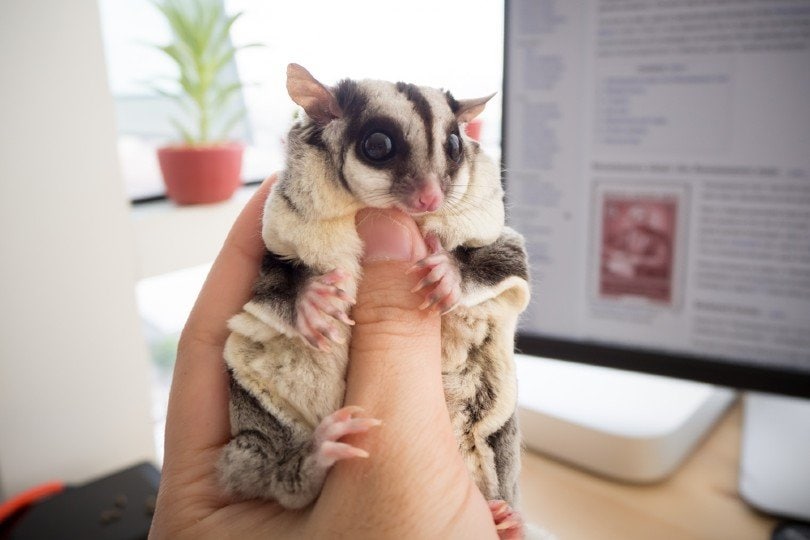Click to Skip Ahead
Chameleons are amazing animals, though they do not make the best pets for everyone. They can get stressed quite easily, and there’s also the cost to take into account. The initial chameleon price ranges from $30 to $300, depending on the species, its age, and where exactly you buy it from. However, this is only a small part of the story.
Besides the chameleon itself, you will need to buy a tank, lighting, heating, plants, thermometer, timer, and an enclosure for the live food. Ongoing costs include food, supplements, power, replacement plants, and any vet bills.
While the price of the chameleon itself might cost $50, you may end up paying 50 times the purchase cost over the life of your pet.

Bringing Home a New Chameleon: One-Time Costs
The price of the chameleon is not the only initial expense you have to consider. In fact, it probably isn’t even the biggest upfront cost. Unless you have owned a chameleon or a similar species of lizard before, you will need to invest in a full setup, which includes the tank and features like lighting, heating, and decoration.
You will also need an initial supply of food and supplements to help ensure your pet starts out as healthy as possible. So, depending on where you get it, this little lizard can be expensive.
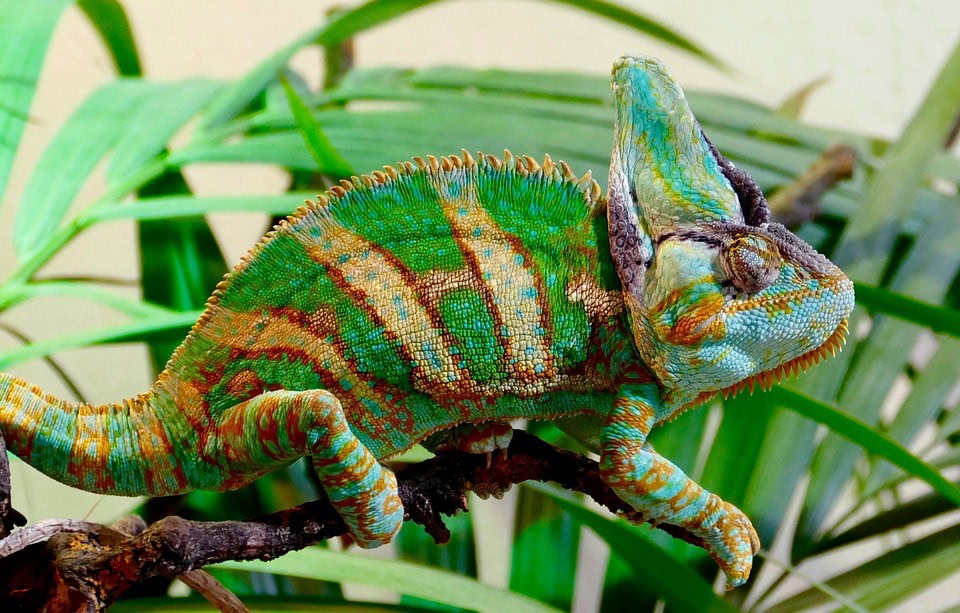
Free
If you know somebody who is getting rid of a chameleon or you have found an unwanted one and you want to give it a home, find out as much information as you can about it first. If the former owner is getting rid of it because they don’t have the time to care for it, you could be getting a good deal. But if they’re rehoming their lizard because they have found it is ill and will require ongoing treatment, you may not have to pay for the lizard, but you are still taking on a serious investment.
Adoption
- $30–$100
Adoption costs vary but will usually range from $30 to $100, with $50 being the most common price. However, it is not easy to find chameleons that have been put up for adoption, unless you can find a specialist lizard and reptile adoption service. If this is the case, you should ask whether they have a cage and any equipment to go with the animal because this will help keep the initial costs down.
Breeder
- $30–$300
Buying a chameleon from a breeder tends to attract the highest costs, but it gives you access to different breeds and a choice of male or female. You may also be able to meet the mother and father of your lizard to get a better understanding of what your own family addition will be like when older. There are a lot of factors here, but you can expect the chameleon price to be between $30 and $300.
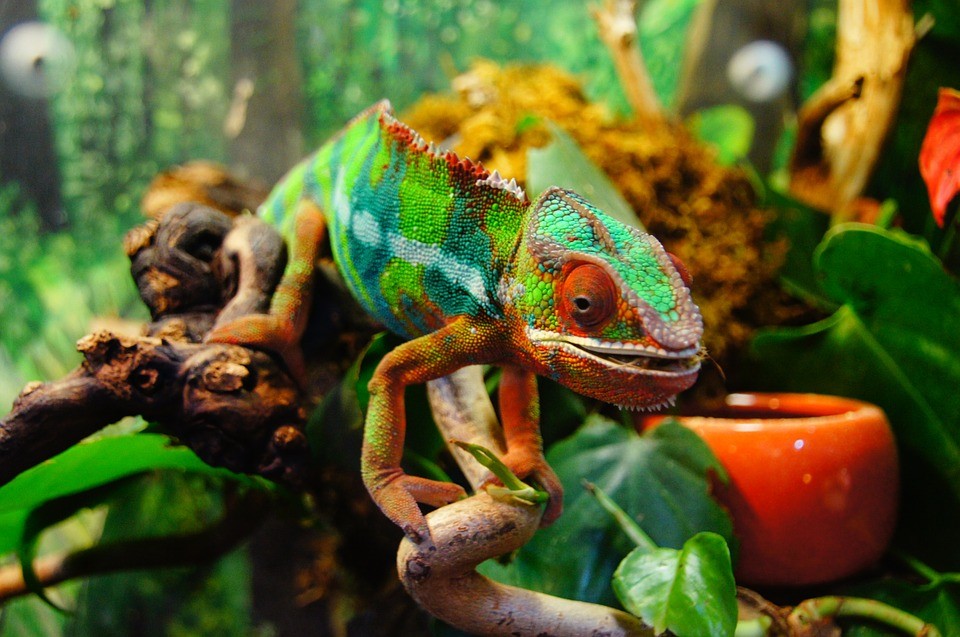
Breed Costs
Another factor that determines how much you pay for a chameleon is the exact breed that you choose. There are dozens of available breeds, but the three most common are bred in captivity and are considered good pets for beginner and experienced owners:
- Veiled chameleon: $30 to $100. The veiled chameleon is the most popular breed. It’s usually captive-bred, but even this variety, which is considered the best for beginners, can get stressed when handled too often or too much. That said, captive-bred chameleons tend to be healthier, friendlier, and less prone to stress than wild examples.
- Panther chameleon: $100-$300. The panther chameleon is also likely to have been captive-bred, so it should be healthier and easier to care for. It tends to be quite docile, which means that you won’t have to chase it around its cage or your room. It’s also easier to care for than other types of lizards.
- Jackson chameleon: $50 to $150. With a life expectancy of around 5 years for females and 10 years for males and an adult size of 10 inches, the Jackson chameleon is another popular variety. It does cost a little more than the veiled but makes an excellent pet for beginner lizard owners.
Supplies
- $325–$800
Before you get your chameleon, you need to ensure that you have a decent setup. This includes a tank, lighting and heating, watering, and enough plants and vines that your little lizard has somewhere to hang. You will also need a thermometer, a digital timer, an initial supply of food, and an enclosure to keep food in. Supplies can cost anywhere up to $800, though you can start with a more limited setup and add to it over time, or you can look for secondhand options to save a little money.
List of Chameleon Care Supplies & Cost
| Enclosure | $50–$300 |
| Lighting | $100–$150 |
| Watering | $30–$130 |
| Plants | $100–$150 |
| Food | $10–$25 |
| Live Food Enclosure | $10–$20 |
| Thermometer | $10–$30 |
| Digital Timer | $15–$25 |

Annual Expenses
- $750–$1,500 per year
Besides initial costs, there are ongoing expenses. While you need to take obvious factors like food and supplements into account, you also need to remember that plants, electricity, and even water all carry their own costs, and you need to add these to your budget.
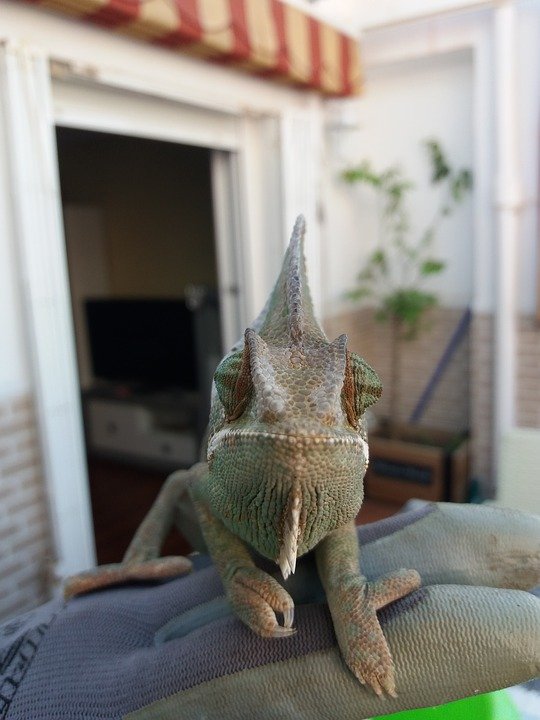
Health Care
- $250–$400 per year
Obviously, healthcare and veterinary costs are entirely unpredictable. Some years, you may not have to take your chameleon to the veterinary clinic at all, while other years might require multiple trips in a short time. This budget allows for the cost of medication and the cost of the vet trips, and you shouldn’t have to pay more than this.
Check-Ups
- $30–$75 per year
Look for deals and package subscriptions to cut down on these expenses, but expect to pay up to around $75 for a check-up visit. The actual cost will vary according to which vet you use. Specialist vets can charge more because they have unique knowledge.
Treatments for Parasites
- $20-$150 per year
Fecal floats and fecal tests are commonly used to test for internal parasites, while a visual inspection can help identify external pests. Treatments vary according to the existence and type of parasite, but these costs can run up to $150 for the test and the treatment combined.
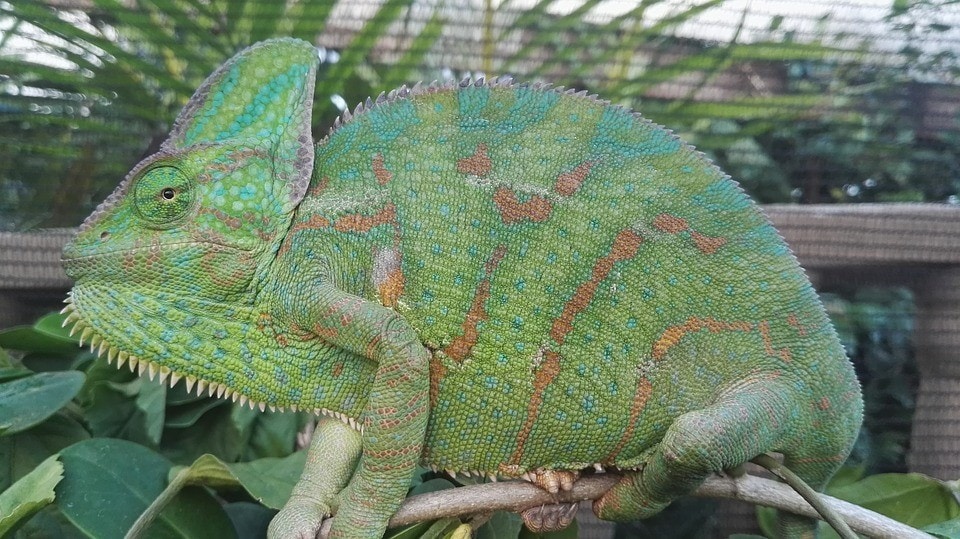
Emergencies
- $200-$300
Emergencies can vary from eye infections to abrasive damage caused by sharp objects. The costs of the emergency will, of course, vary according to the actual emergency and its severity, but you can expect to pay anywhere up to $300 for a single or short course of visits to deal with an emergency.
Insurance
- $100-$150
One of the best ways to control veterinary costs is through pet insurance, and the increase in popularity of lizards and reptiles has led to more insurance companies offering coverage for this type of animal. The level of coverage you take will directly affect the total cost, but you should expect to pay around $10 per month for this useful insurance policy.
Food
- $150–$200 per year
Your chameleon will primarily eat crickets, and you cannot keep these for long before they die or they grow too large for your chameleon to eat. In most areas, you can buy a tub of approximately 250 crickets, lasting 10 days, for about $3. A year’s supply will cost $100 to $150. Alternatively, you can start a roach colony that will become self-sufficient and cost you nothing. Supplements cost an additional $30 to $50 per year.
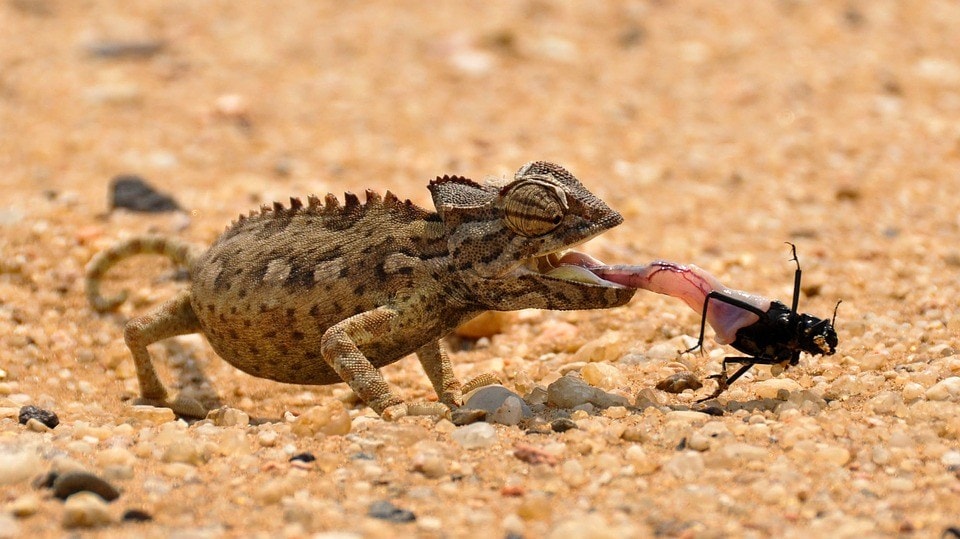
Environment Maintenance
- $300–$500 per year
Your chameleon needs good lighting as a heat source and a light source. It also needs good live plants, as these will enable it to rest and hide if it’s feeling stressed. Finally, you will have to pay for electricity to keep the tank and equipment running when required. Try to look for deals on packs of bulbs and on plants and vines to help keep costs down, but you will still have to pay around $300 a year for upkeep.
| Halogen Bulbs | $100/year |
| Plants and Vines | $80/year |
| Electricity | $200/year |
Total Annual Cost of Owning a Chameleon
- $750–$1,500 per year
It will cost you around $750 a year, up to a maximum of $1,500 per annum, to own a chameleon. The actual amount you have to pay will depend on whether your chameleon gets ill, how much your vet charges, and whether you opt to take out pet insurance for your reptile.
You shouldn’t cut corners on things like lighting and electricity. Even turning the lights off for an hour a day longer than necessary could stress your little one out, making it ill. There are, however, some ways that you can cut costs.


Owning a Chameleon on a Budget
There are several ways to cut costs when it comes to owning a chameleon. You can start by looking to adopt this lizard. You may also find a package that includes a cage and other required equipment. Alternatively, look for a secondhand cage, but do ensure that it is in good or reasonable condition or that any repairs would have minimal costs.
Some supply stores may offer a subscription-type service for food and supplements, and if you can buy anything in bulk, this will help cut costs. Light bulbs and even supplements may be available in bulk. You will always need them, they should keep for at least several months to a year, and you could save $100 a year or more.
Pet insurance can save you a lot of money in the long run. It costs around $10 a month, but even a basic veterinary visit can cost upward of $100.

Conclusion
A chameleon is a good introduction to the world of lizard pet ownership, but besides the initial purchase cost of the lizard itself, which can range from $30 to as much as $300, you have to consider other setup costs and ongoing costs.
You should expect to spend around $500 on initial equipment, including the cage, lighting, and enough food and supplements to last the first 10 days or so. From there, you should expect annual costs equivalent to about $100 a month, or $1,200 a year.
This includes extraordinary costs like emergency veterinary fees, food and supplements, and any other expenses. It may be possible to save money by buying items like light bulbs in bulk and by paying for pet insurance for your chameleon to eliminate or reduce ongoing veterinary costs.
Related read:
Featured Image Credit: Pixabay
